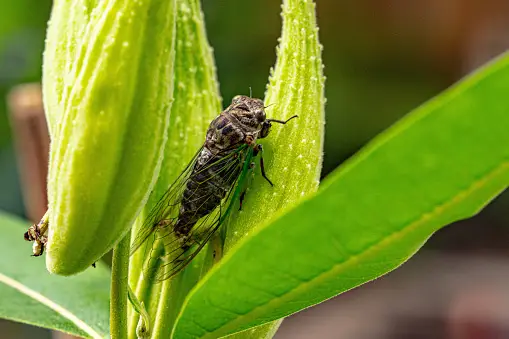The Return of the Cicadas: A Natural Phenomenon

Every few years, a remarkable event unfolds in the natural world that captures the imagination and curiosity of scientists and enthusiasts alike.
This event is the emergence of the cicadas, ancient insects that spend the majority of their lives underground before emerging en masse to mate, lay eggs, and continue the cycle of life. In this comprehensive exploration, we'll delve into the fascinating world of cicadas, examining their life cycle, behavior, ecological significance, and the awe-inspiring spectacle of their periodic emergence.
The Life Cycle of Cicadas
Cicadas belong to the order Hemiptera and are known for their distinctive buzzing sound, which is produced by the males to attract mates. The life cycle of cicadas is one of the most remarkable in the insect world, spanning several years and involving distinct stages of development. It begins when the female cicada lays her eggs in the branches of trees or shrubs, where they hatch into nymphs and fall to the ground below. The nymphs then burrow into the soil, where they spend the next several years feeding on sap from tree roots and undergoing gradual metamorphosis. After a period of anywhere from two to seventeen years, depending on the species, the nymphs emerge from the ground as adults, shedding their exoskeletons and taking flight to begin the mating process.Periodical Cicadas vs. Annual Cicadas
Cicadas are divided into two main groups: periodical cicadas and annual cicadas. Periodical cicadas, such as those belonging to the genus Magicicada, emerge in large numbers at regular intervals, typically every 13 or 17 years. These synchronized emergences are thought to be an evolutionary adaptation that helps cicadas overwhelm predators and ensure the survival of their offspring. In contrast, annual cicadas, also known as dog-day cicadas, emerge every summer and are more widely distributed throughout the United States.The Phenomenon of Cicada Emergence
The emergence of cicadas is a spectacle unlike any other in the natural world, with billions of insects bursting forth from the ground in a cacophony of buzzing and chirping. This mass emergence, known as a brood, can be so extensive that it can be seen from space and can have significant ecological implications for the surrounding ecosystem. Cicadas play a vital role in nutrient cycling and soil aeration, and their emergence can trigger a feeding frenzy among predators such as birds, mammals, and even humans, who harvest them as a delicacy.Ecological Significance of Cicadas
Cicadas are not only fascinating creatures in their own right but also play a crucial role in the ecosystem. As they emerge from the ground and molt into adults, they provide a vital food source for a wide range of predators, including birds, reptiles, and mammals. In turn, these predators help to regulate cicada populations and maintain balance within the ecosystem. Additionally, cicadas contribute to nutrient cycling by depositing their waste on the forest floor, where it decomposes and enriches the soil.Cultural and Mythological Significance
Throughout history, cicadas have held a special place in the hearts and minds of people around the world, inspiring myths, legends, and cultural traditions. In many cultures, cicadas are seen as symbols of rebirth, immortality, and renewal, due to their cyclical life cycle and ability to emerge from the ground after years of dormancy. In ancient Greece and Rome, cicadas were associated with the Muses and were believed to inspire creativity and artistic expression. In China and Japan, cicadas are celebrated in poetry, literature, and art as symbols of summer and the transient beauty of life.Conclusion: A Testament to Nature's Resilience
In conclusion, the emergence of cicadas is a testament to the resilience and adaptability of the natural world. Despite spending the majority of their lives underground, cicadas emerge with a sense of purpose and determination, driven by the instinct to reproduce and ensure the survival of their species. Their mass emergences are a reminder of the interconnectedness of all living things and the profound impact that even the smallest creatures can have on the world around them. As we marvel at the spectacle of the cicadas' return, let us also reflect on the beauty and complexity of the natural world and our role in preserving it for future generations to enjoy.#Cicadas #NaturalPhenomenon #Ecology #Entomology #1knairaInsights Category Farm and Garden
News Source
Date Posted 1 year ago